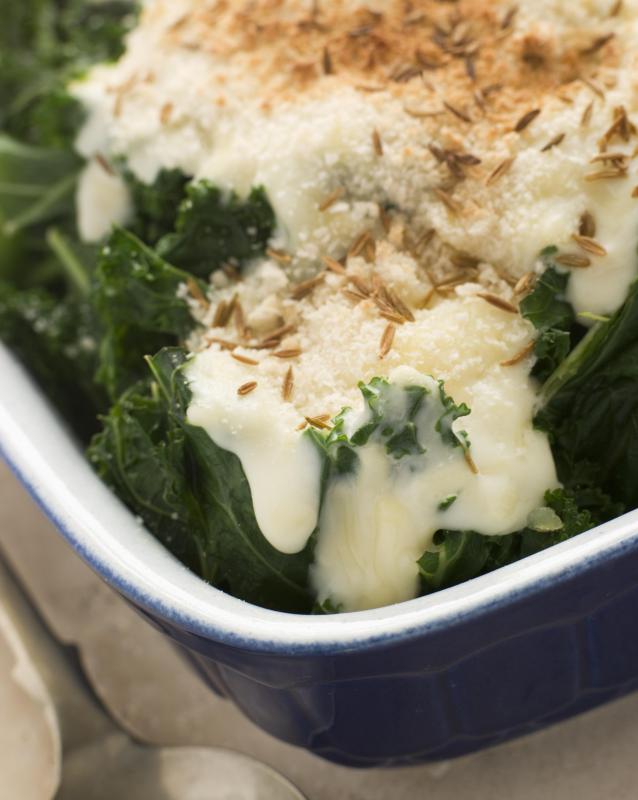At DelightedCooking, we're committed to delivering accurate, trustworthy information. Our expert-authored content is rigorously fact-checked and sourced from credible authorities. Discover how we uphold the highest standards in providing you with reliable knowledge.
What Is Kai-Lan?
Kai-lan, also known as kailan, Gai Lan, and Chinese kale, cabbage, or broccoli, is a traditionally eaten leafy green vegetable included in stir fry dishes in Chinese cuisine. In appearance, it resembles kale or Romaine lettuce in that it has long, dark green leaves and nearly non-existent flower heads. Chinese broccoli is officially classified in the broccoli family, however, as a member of the Brassica oleracea species. Though the plant is used in many Chinese dishes, it has little nutritional value like that of western vegetables such as celery. The most prominent vitamins found in kai-lan are vitamin A and vitamin C, with trace amounts of the minerals calcium and iron present.
As a colorful addition to dishes, kai-lan has a flavor that is reminiscent of broccoli itself, and hybrid plants have been created by cross-breeding broccoli and kai-lan to produce a vegetable known as broccolini. Many different strains of the vegetable kai-lan exist in Asian food markets, though most are referred to as Chinese kale. It is usually available year-round, but has a short shelf life of a week or so once harvested and is intended to be used fresh and not traditionally canned or dried. Though common throughout China, the east Asian populations of Vietnam, Myanamar, and Thailand also consider it to be a staple part of their diets.

The flavor of kale-type vegetables such as kai-lan are muted during the cooking process as they absorb fats and oils from other parts of the dish. The vegetable is often used when cooking fatty meats such as pork or duck for this reason, as well as with dishes that utilize hot spices or thicker fats such as those from cheese. Within China itself, it is most popular in Cantonese cooking centered in the Guangdong Province of southern China that borders on the South China Sea.

The origin for kai-lan is considered to be in Europe despite the fact that it is most widely consumed in Asia. The Portuguese are said to have brought the vegetable to China during the early days of Portuguese expansion and colonization. Historical evidence suggests that the current form of the vegetable is most closely related to cabbages such as European calabrese, and kai-lan is most likely a direct offshoot of the Portuguese Tronchuda cabbage. Since the vegetable is hardy to the cold and grows well in a variety of soil and climate conditions, it has become a staple of many Asian and European dishes over the centuries.
AS FEATURED ON:
AS FEATURED ON:














Discuss this Article
Post your comments